Sorbus aucuparia, commonly called rowan or mountain-ash, is a species of deciduous tree, not related to ash. It is a highly variable species, with a number of varieties.

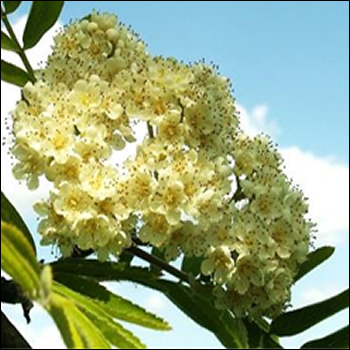
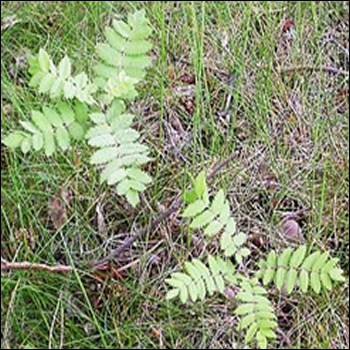
Sorbus aucuparia has a slender trunk with smooth bark, a loose and roundish crown, and its leaves are pinnate in pairs of leaflets on a central vein with a terminal leaflet. It blossoms from May to June in dense corymbs of small yellowish white flowers and develops small red fruits that ripen from August to October and are eaten by many bird species. The plant is undemanding and frost hardy and colonizes inaccessible places as a short-lived pioneer species. It’s tough and flexible wood has traditionally been used for woodworking. It is planted to fortify soil in mountainous regions or as an ornamental tree and has several cultivars.
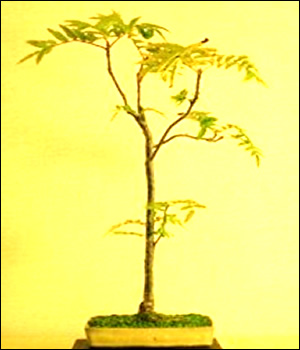
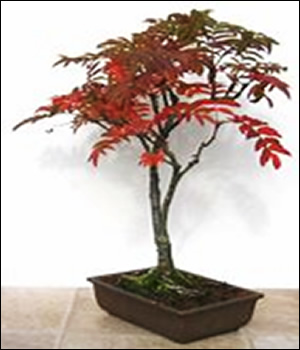
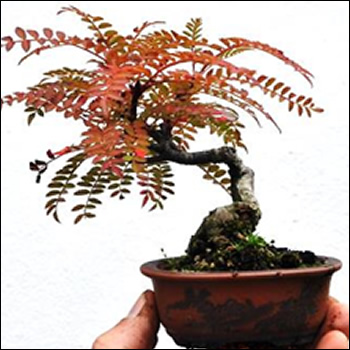
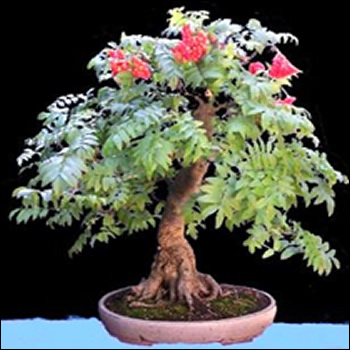
Used as a bonsai, then you must ask yourself a number of questions,
- do you want to finish up with a classic highly styled bonsai or
- do you want a tree that is easy to work and very forgiving of your errors, but will never produce small leaves and dense foliage pads, with a trunk that will forever be slender and without great character features?
If your answer is the first then rowan is not for you but if it is the second then you have a tree that is easy to access and very kind and easy to work. The trunk tapers elegantly but still retains an obvious strength due to it being perfectly straight. The leaves are divided leaflets, which you trim back to a fewer number and give the impression of reduced size. The colours of the rowan in autumn are incredible. The berries are very decorative but keep the birds away or they will be decimated. It is a broadly conical to rounded tree with a loose crown. Leaves are mid- to dark-green and display red and yellow autumn colours. Pinnate leaves are oblong-lance shaped to 20cm long but consist of anything up to 12 small leaflets. They can be reduced to just 2 or 3 leaflets for the purpose of bonsai. Trim new shoots continually to maintain shape. Prune branches back hard in late-winter. Reduce leaf size by removing leaflets to leave between 2 and 6. Prune hard at midsummer to encourage branching.
Web design: nysys